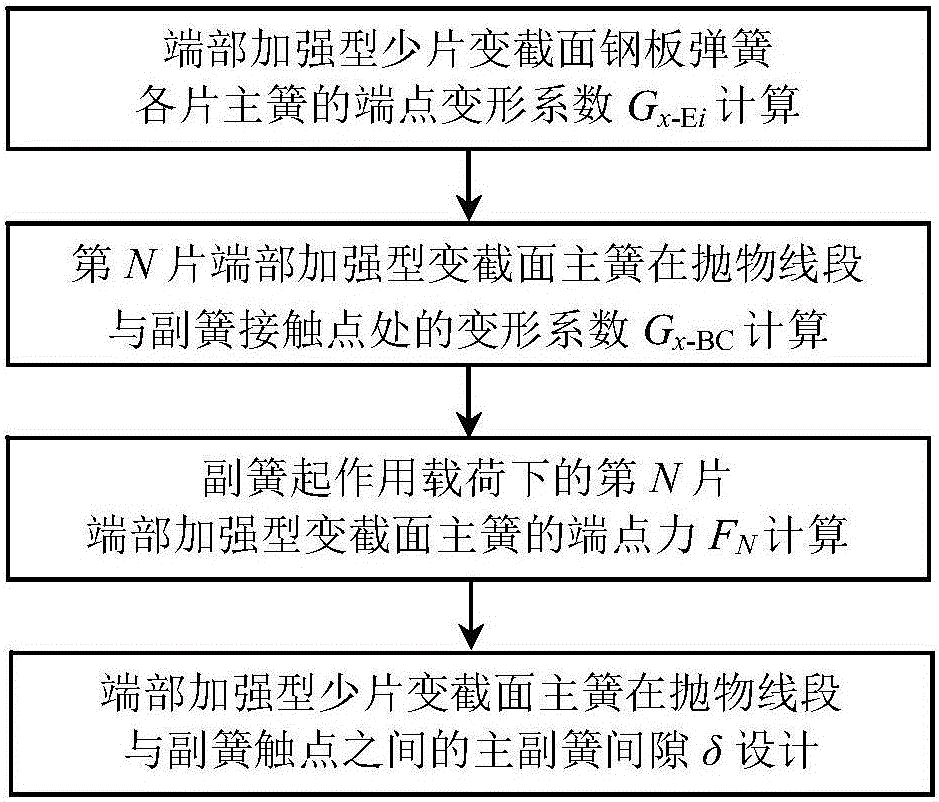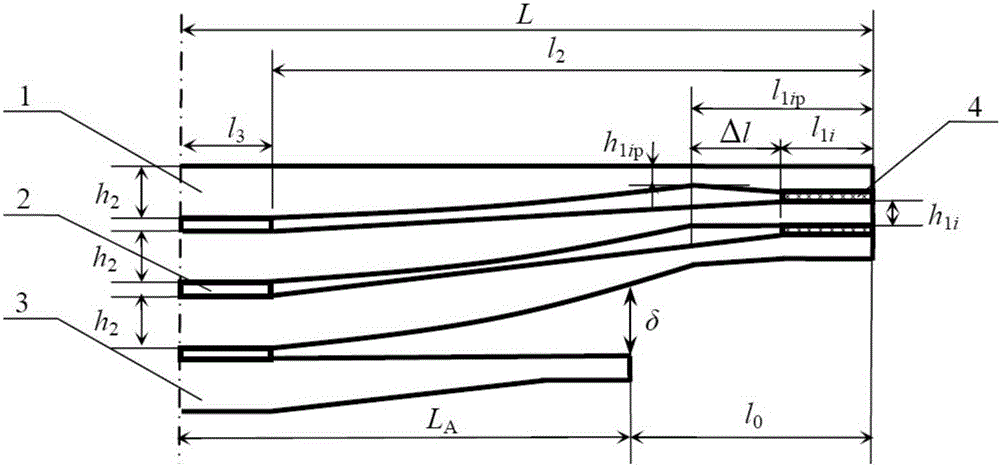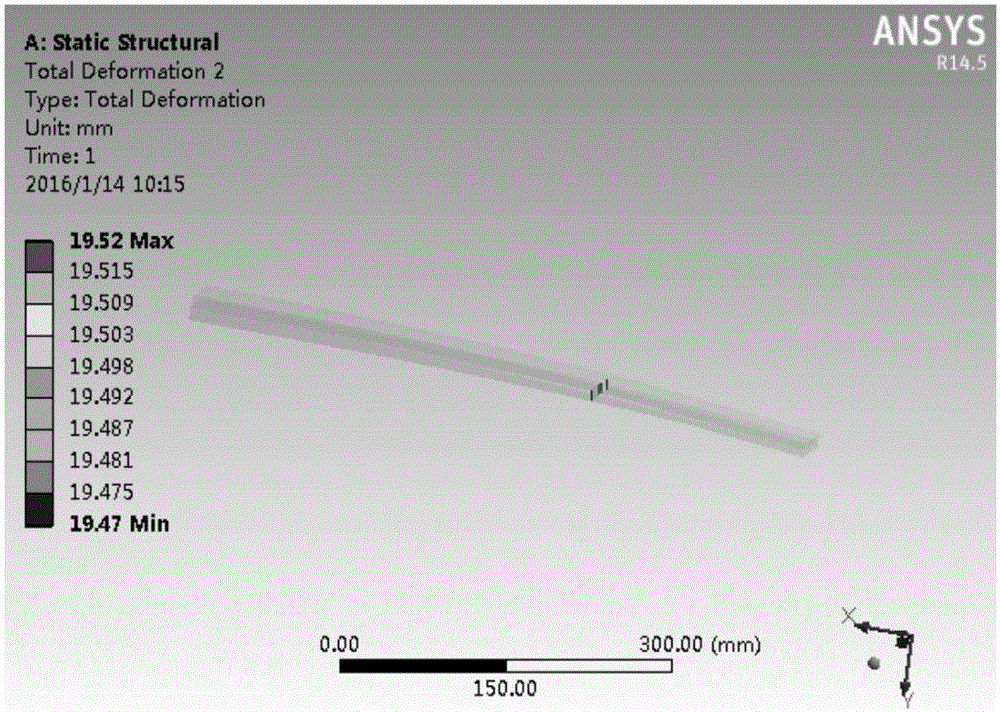Method for designing clearances between parabolic segments of end reinforced type few-leaf main springs and auxiliary springs
A design method and reinforced technology, which are applied in the field of vehicle suspension leaf springs, can solve the problems of failing to provide an end-reinforced type main spring with few leaves, unable to meet, and unable to meet the design requirements of few-piece variable-section leaf springs.
- Summary
- Abstract
- Description
- Claims
- Application Information
AI Technical Summary
Problems solved by technology
Method used
Image
Examples
Embodiment 1
[0033] Embodiment 1: The number of pieces of a certain end-reinforced main spring with variable cross-section is N=2, wherein half of the length of each main spring is L=575mm, width b=60mm, modulus of elasticity E=200GPa, and the root is straight segment thickness h 2 =10.72mm, half of the installation distance l 3 = 55mm, the length of the oblique line Δl = 30mm, the distance l from the root of the parabola to the end of the main spring 2 =L-l 3 =520mm; end thickness h of the parabolic segment of the first main spring 11p =5.9mm, that is, the thickness ratio β of the parabolic segment of the first main spring 1 =h 11p / h 2 =0.55; The end thickness h of the parabolic segment of the second main spring 12p =4.72mm, that is, the thickness ratio β of the parabolic segment of the second main spring 2 =h 12p / h 2 =0.44; Thickness h of the end straight section of the first main spring 11 =6.9mm, the thickness h of the straight section at the end of the second main spring ...
Embodiment 2
[0053] Embodiment 2: The number of pieces of a certain end-reinforced few-piece variable-section main spring is N=2, wherein, half of the length of each main spring is L=600mm, width b=60mm, modulus of elasticity E=200GPa, root thickness h 2 =13.87mm, half of the installation distance l 3 =60mm, the distance from the root of the parabola segment to the end point of the main spring l 2 =L-l 3 =540mm; end thickness h of the parabolic segment of the first main spring 11p =7.63mm, the thickness ratio β of the parabolic segment of the first main spring 1 =h 11p / h 2 =0.55; The end thickness h of the parabolic segment of the second main spring 12p =6.10mm, the thickness ratio β of the parabolic segment of the second main spring 2 =h 12p / h 2 =0.44; The thickness of the straight section at the end of the first main spring and the second main spring is h 11 = 8.93mm and h 12 =7.14mm; the length of the oblique line segment Δl=30mm, the thickness ratio of the oblique line segm...
PUM
| Property | Measurement | Unit |
|---|---|---|
| Modulus | aaaaa | aaaaa |
| Width | aaaaa | aaaaa |
| Elastic modulus | aaaaa | aaaaa |
Abstract
Description
Claims
Application Information
 Login to View More
Login to View More - R&D
- Intellectual Property
- Life Sciences
- Materials
- Tech Scout
- Unparalleled Data Quality
- Higher Quality Content
- 60% Fewer Hallucinations
Browse by: Latest US Patents, China's latest patents, Technical Efficacy Thesaurus, Application Domain, Technology Topic, Popular Technical Reports.
© 2025 PatSnap. All rights reserved.Legal|Privacy policy|Modern Slavery Act Transparency Statement|Sitemap|About US| Contact US: help@patsnap.com



